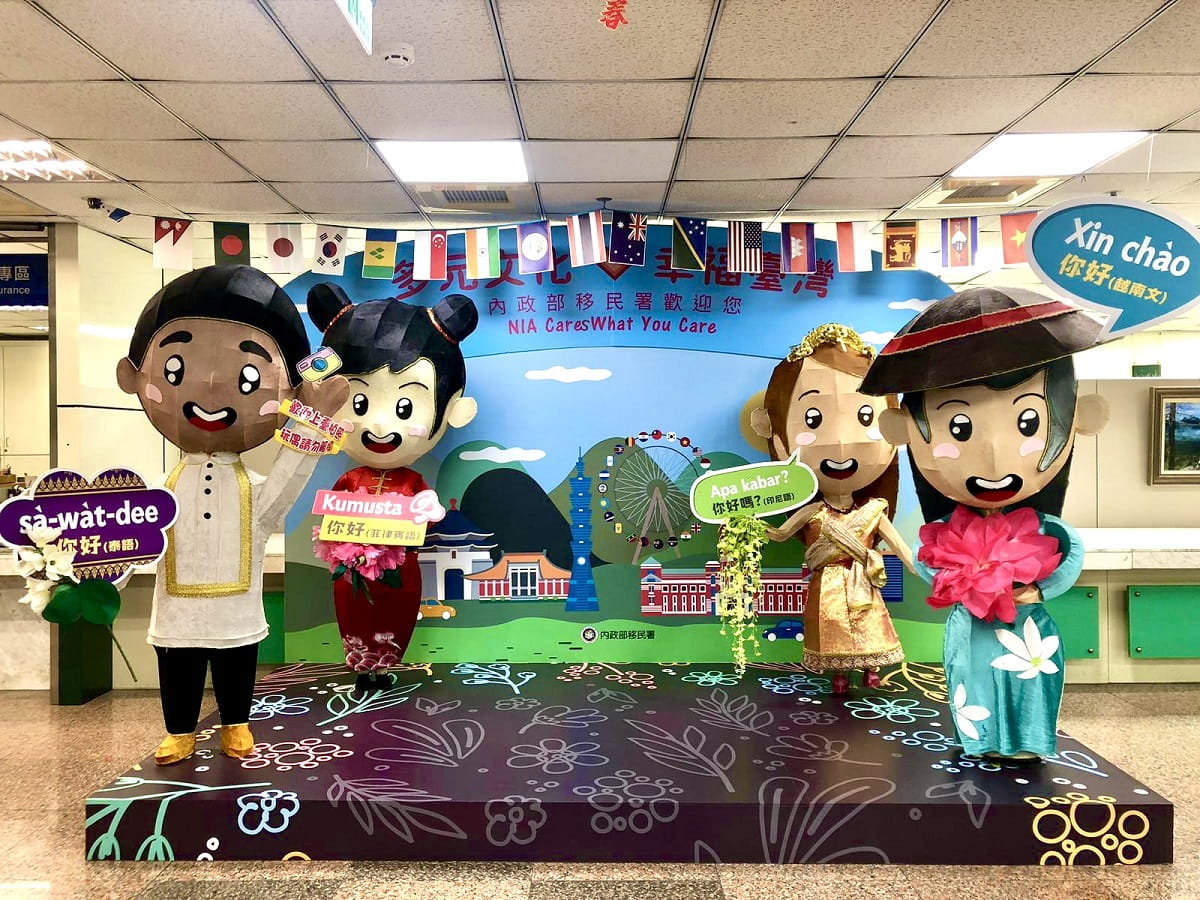While defending itself from China is clearly Taiwan’s most pressing concern, increasingly it has also been seeking to differentiate itself from its neighbour. Its democratisation in the 1990s is the obvious contrast, but the freedom of press, speech and assembly that flowed from this has opened the door for an array of new cultural influences too. Nowadays, the Taiwanese public overwhelmingly see themselves as a distinct nation, and this feeling is strongest within its globally connected youth.
However, it may be one of Taiwan’s major structural problems that accelerates this movement away from China. Like most advanced economies, Taiwan’s birth rate is below replacement level, and this is both coinciding with and exacerbating skill shortages in key sectors. With a need for people, migration has become critical for Taiwan’s national strategy, and in turn has Taipei considering a more multicultural society.
To ease its labour deficits, Taiwan has primarily turned towards Southeast Asia.
To ease its labour deficits, Taiwan has primarily turned towards Southeast Asia. Workers mostly from Vietnam and Indonesia, with fewer but still substantial numbers from the Philippines and Thailand, fill shortages in manufacturing, construction, agriculture and fishing, or in domestic and elder care. According to April figures from Taiwan’s National Immigration Agency (NIA), there are currently 768,360 migrant workers in Taiwan, pushing up towards four per cent of the population.
The visas on offer are generous, with workers able to stay in Taiwan for a cumulative 12 years (14 years for caregivers). Alongside this, in 2022 the government launched the Long-Term Retention of Skilled Foreign Workers Program, creating a new category of “intermediate skilled migrant workers” for those able to advance within their industries. The category grants these workers an unlimited length of work rights.
In order to facilitate this migration, the Taiwanese government has begun constructing the formal trappings of multiculturalism. It provides some services in Vietnamese, Indonesian, Thai and Tagalog, has funded multilingual radio programs, and in 2019 the school system began teaching seven Southeast Asian languages – Indonesian, Vietnamese, Thai, Malay, Tagalog, Khmer and Burmese. The latter is designed not only for the children of migrant workers to have access to education in family languages, but to build Taiwan’s cultural capabilities within Southeast Asia.

Yet the nature of Taiwan’s low-skilled migration strategy lends itself to a number of problems. Migrants are often disempowered through a lack of Mandarin skills, limited social networks, and poor working and living conditions. Of particular concern is the risk of debt bondage, with foreign workers having to pay recruiters for their services.
Migrant workers also run the risk of being pulled into the informal economy where exploitation is rife. On top of its official migrant worker figures, the NIA counts a further 86,905 people who are described as having “lost contact” – meaning they haven’t renewed their visas but also haven’t left Taiwan.
In what is a relatively homogenous society, the difficulties of embracing cultural difference are compounded if respect is not built into the conditions migrants face. This is particularly important as Taiwan reaches further away from its shores to fill its labour shortages. Earlier this year, Taipei signed a Memorandum of Understanding with India on labour cooperation. The then-labour minister Hsu Ming-chun followed this with a less-than-diplomatic remark that Taiwan would prefer migrants from India’s northeast as “their skin colour and eating habits are similar to ours”.
Yet perspectives like this may be baked into the migration strategy itself. The guiding assumption of the strategy is that Taiwanese themselves will fill the higher paying, high status jobs, and foreigners can handle the rest. It creates social tiers that are an impediment to a mutually recognised sense of belonging – the platform on which multiculturalism needs to rest.
Seeking to dismantle social tiers is also essential if Taiwan truly wishes to distinguish itself from China.
Although citizenship can be gained after five years, with no option for dual citizenship – and given Taiwan’s uncertain future – the take-up is low. Between 2016 and the end of 2023, only 281 migrants became citizens. This makes it difficult for migrant workers to be seen, and see themselves, as immigrants. Let alone form part of a new multicultural Taiwanese identity.
Seeking to dismantle social tiers is also essential if Taiwan truly wishes to distinguish itself from China. In recent years, the Chinese Communist Party (CCP) has been gravitating further towards ethnic nationalism. This is apparent in the policy of Sinicisation of Uyghurs and Tibetans, as well as the party’s extraterritorial designs on all ethnic Chinese. This ethnic nationalism is also recognisable in the denunciation of anyone who doesn’t fall in line with CCP diktats as a “traitor to the Chinese people”.
Taiwan has sought to contrast itself to this by seeking to remedy the past mistreatment of its indigenous people, and giving them greater public prominence – demonstrating both an element of Taiwanese society that China lacks, and a desire to respect and celebrate cultural difference.
Expanding this respect to Southeast Asian migrant workers is not just a way for Taiwan to embrace multiculturalism. It also creates a web of interests that enhance Taiwan’s security. Southeast Asian countries that have significant remittances flowing from Taiwan, and have citizens based in Taiwan (and treated well), will see their own interests in maintaining the status quo across the Taiwan Strait. A new multicultural Taiwanese identity may help to deter China as much as distinguish Taiwan from it.
Grant Wyeth travelled to Taiwan courtesy of the Ministry of Foreign Affairs, Republic of China (Taiwan)

